
Rainwater decoupling in the city center of Berlin
Project services:
As-built survey in coordination with open space planning
Modeling of the infiltration systems and retention volumes with flood proofs
Determination of locations and configuration of underground and aboveground plant components.
Construction costs:
Total investment for civil engineering works
575.000 € net
Area:
4,000 m² of existing space in a confined urban area.
Additional requirement:
Rainwater drainage of the access road conditional filter system to the tunnel brigole
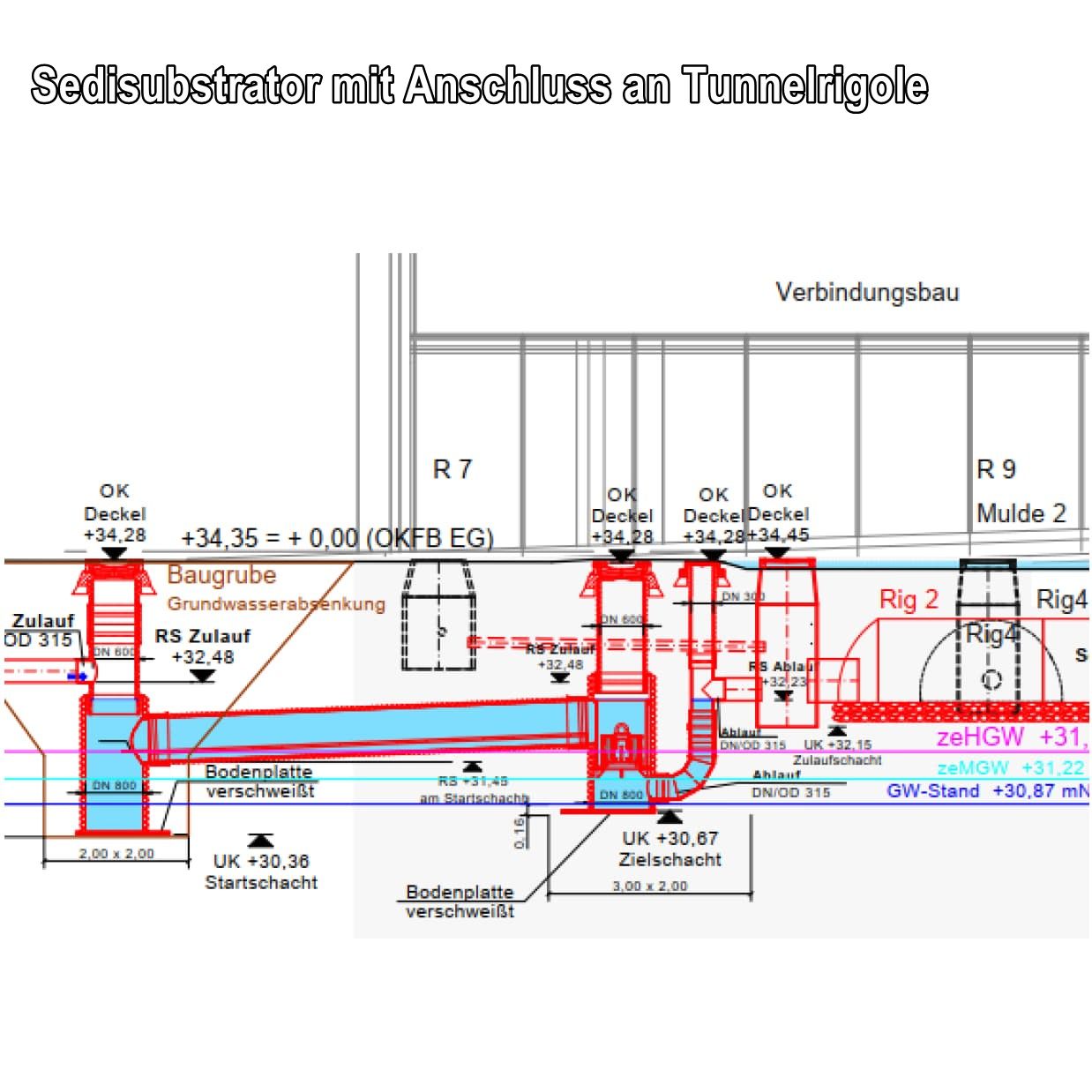
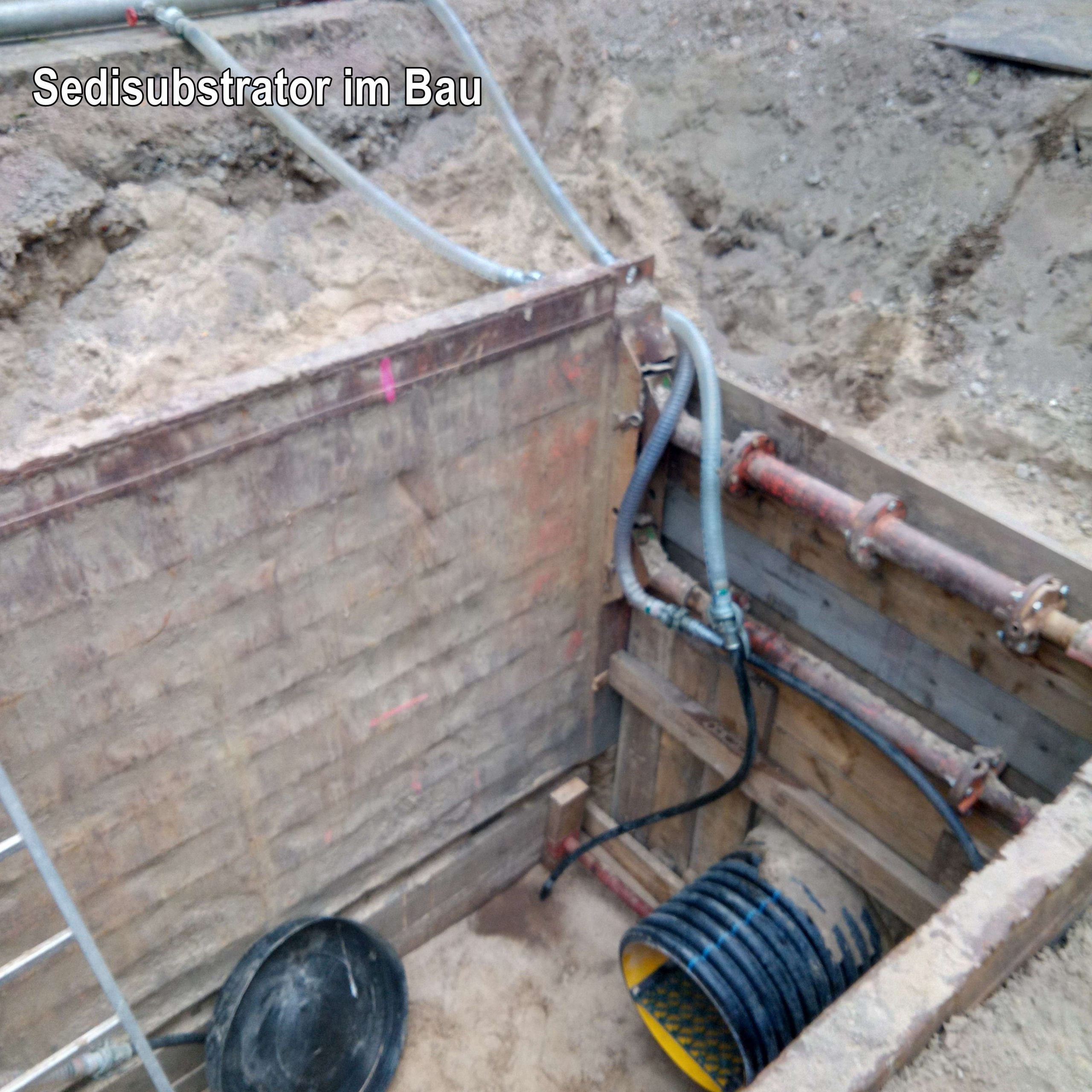
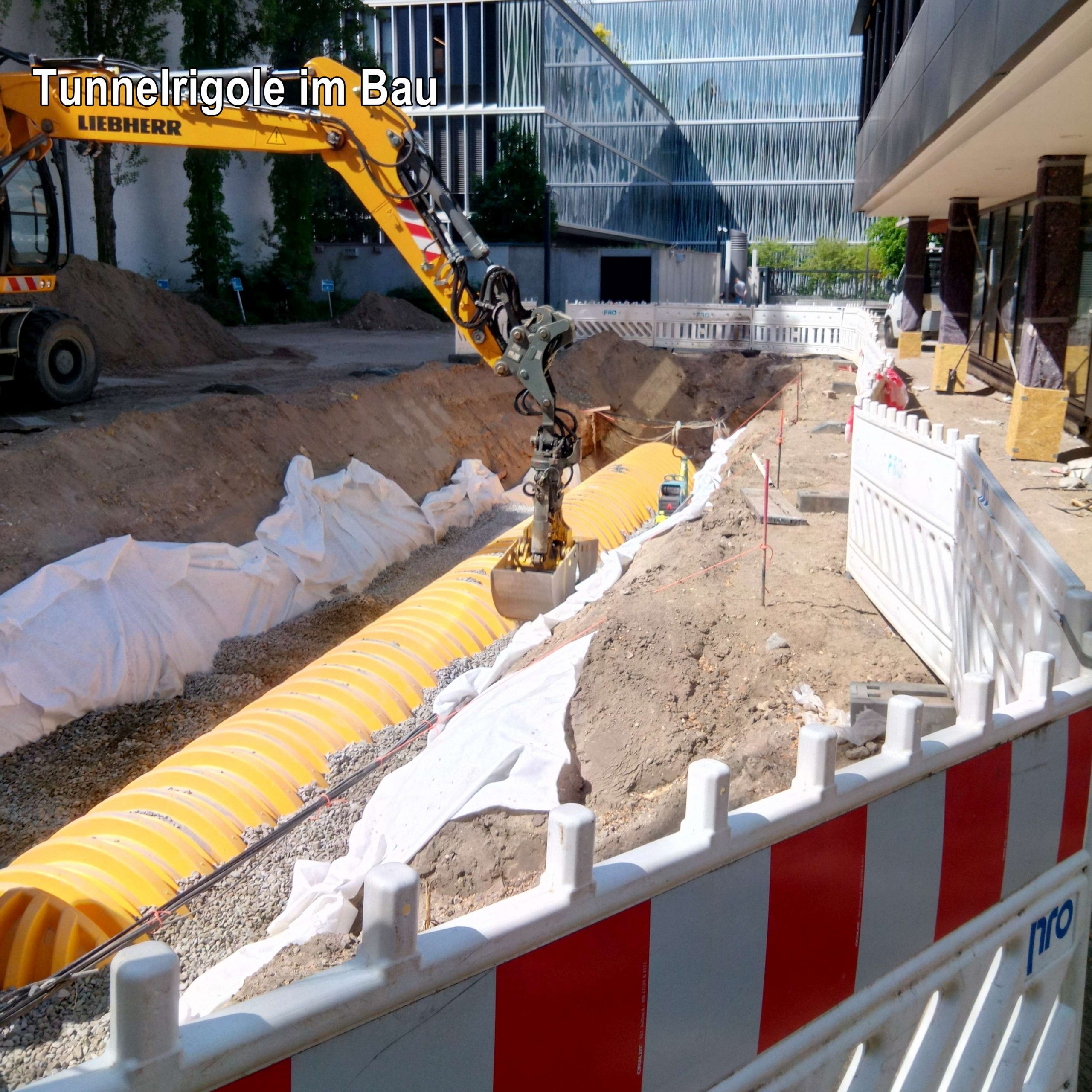
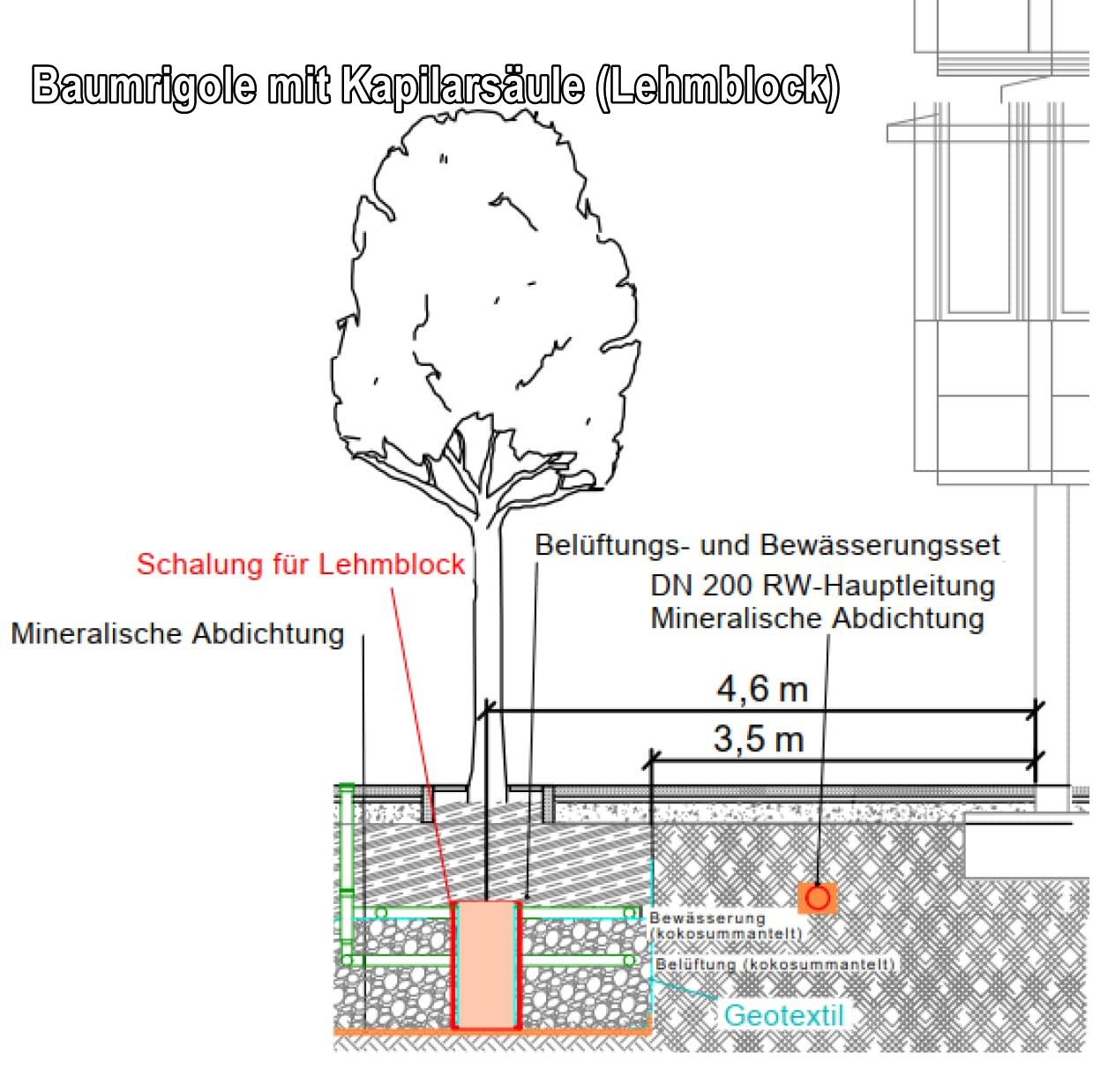
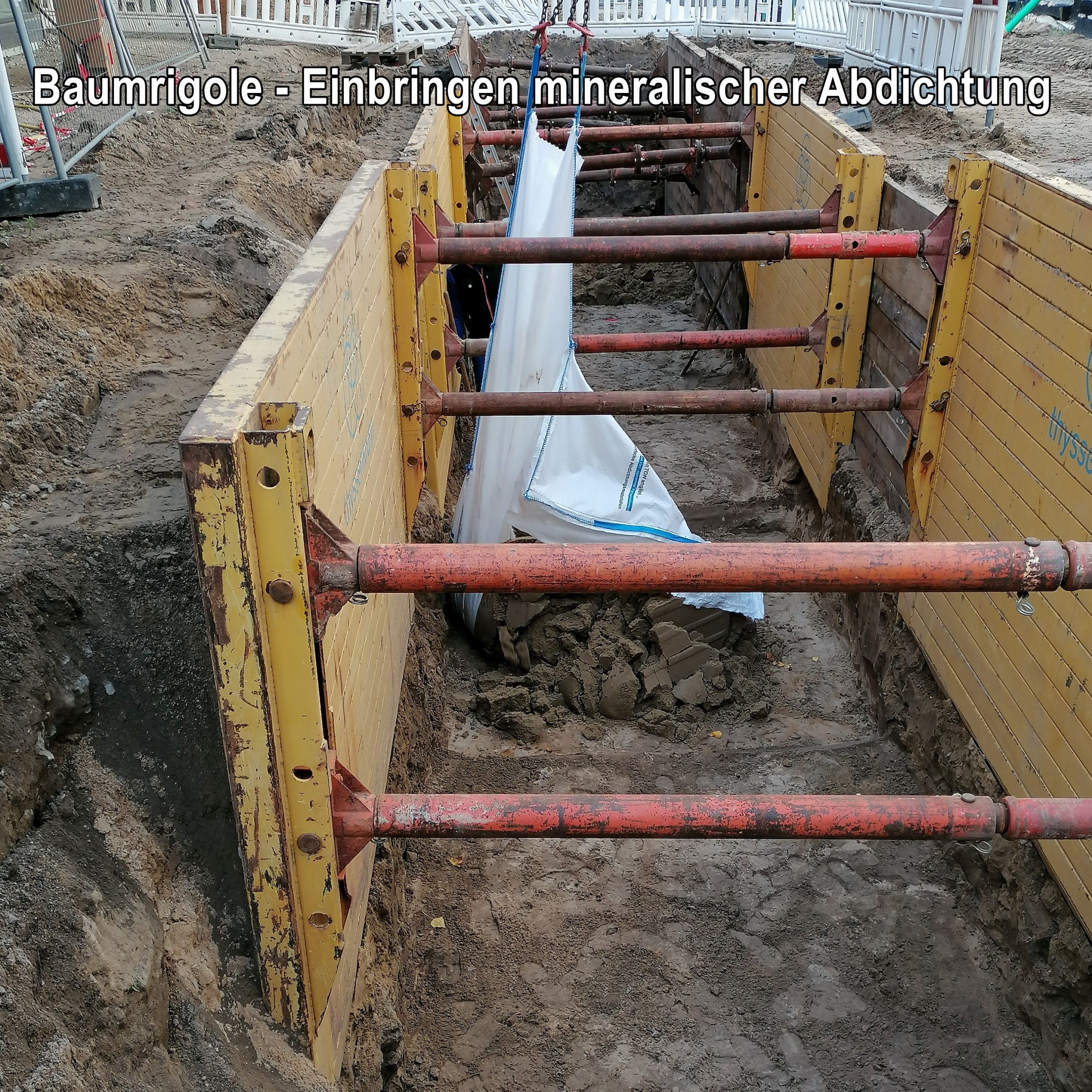
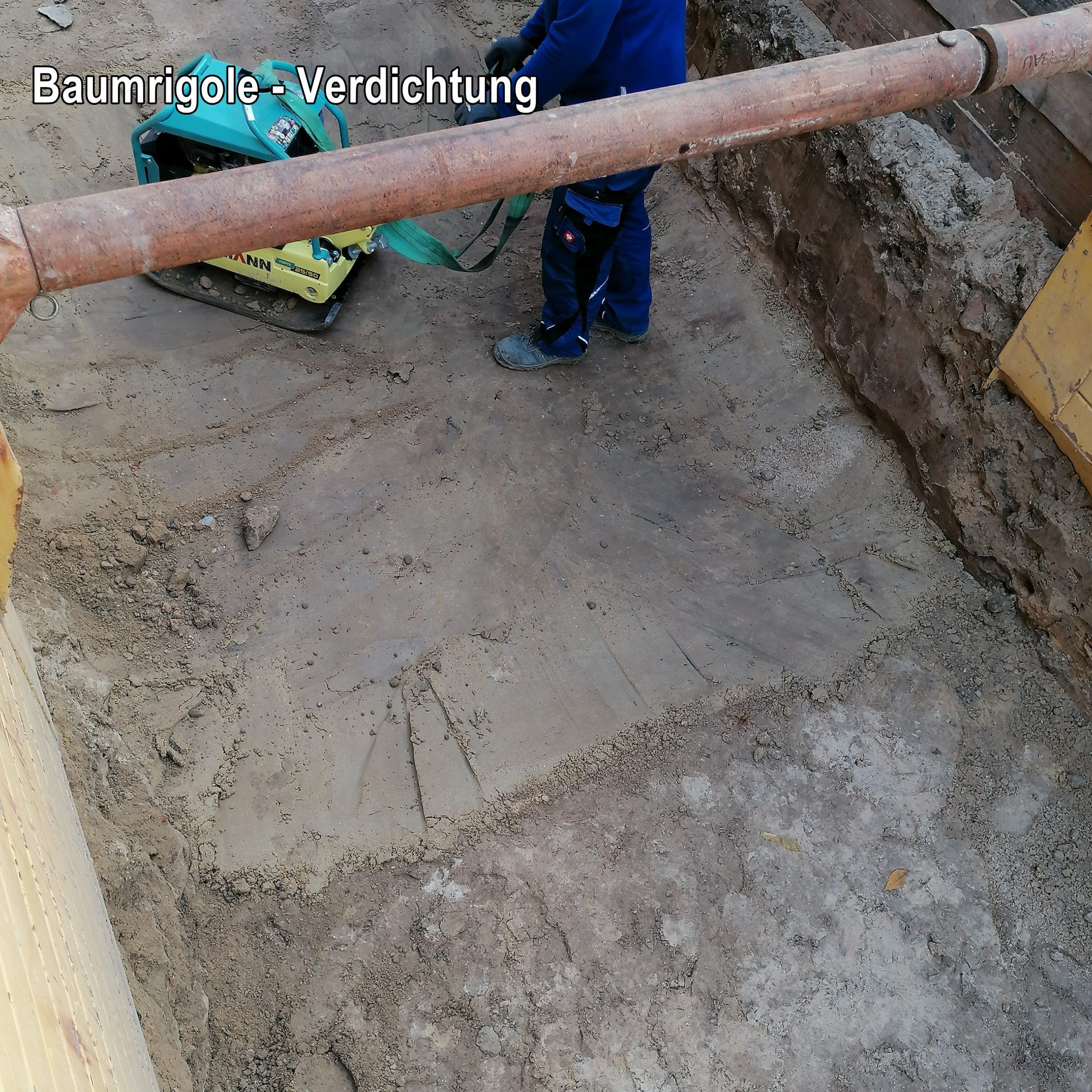
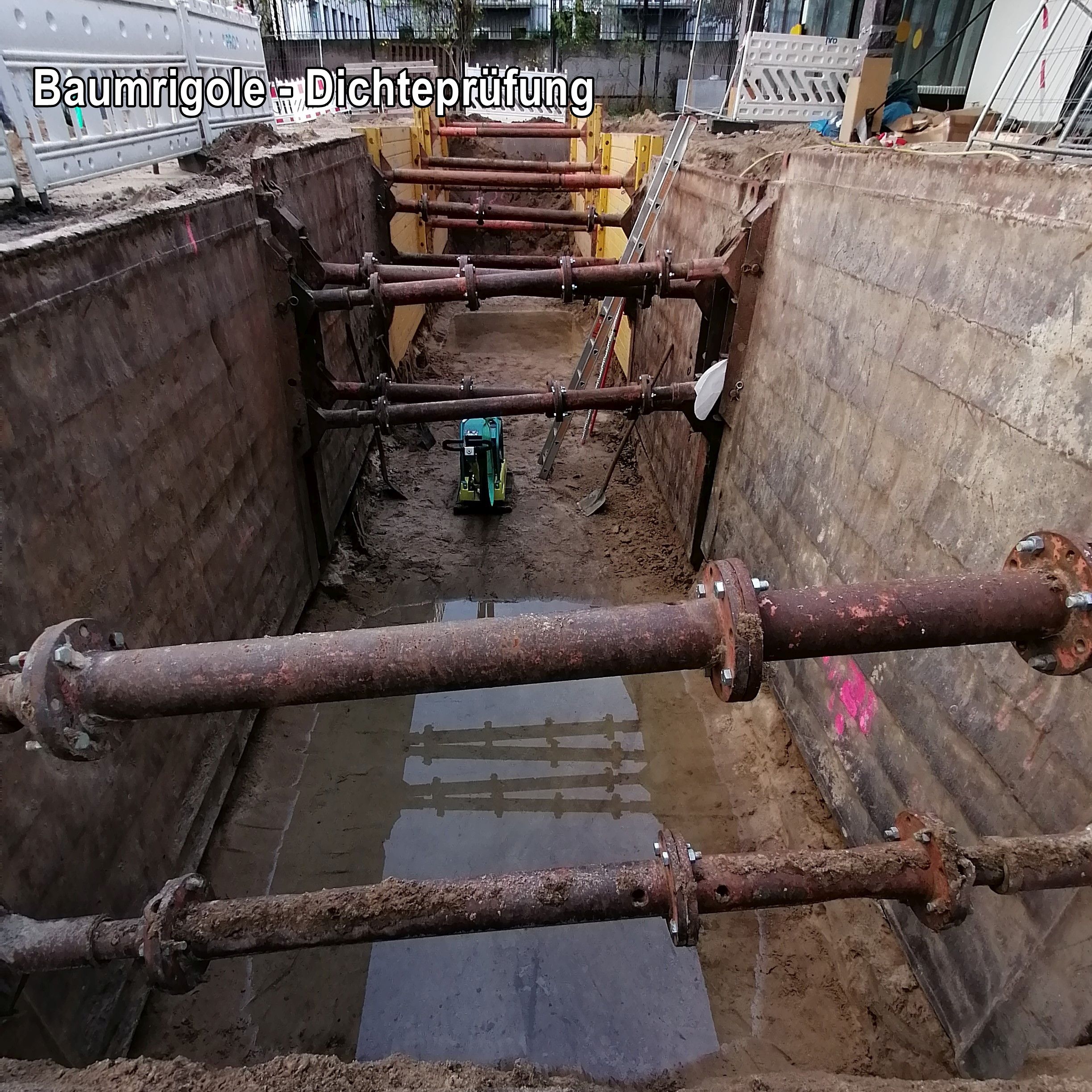
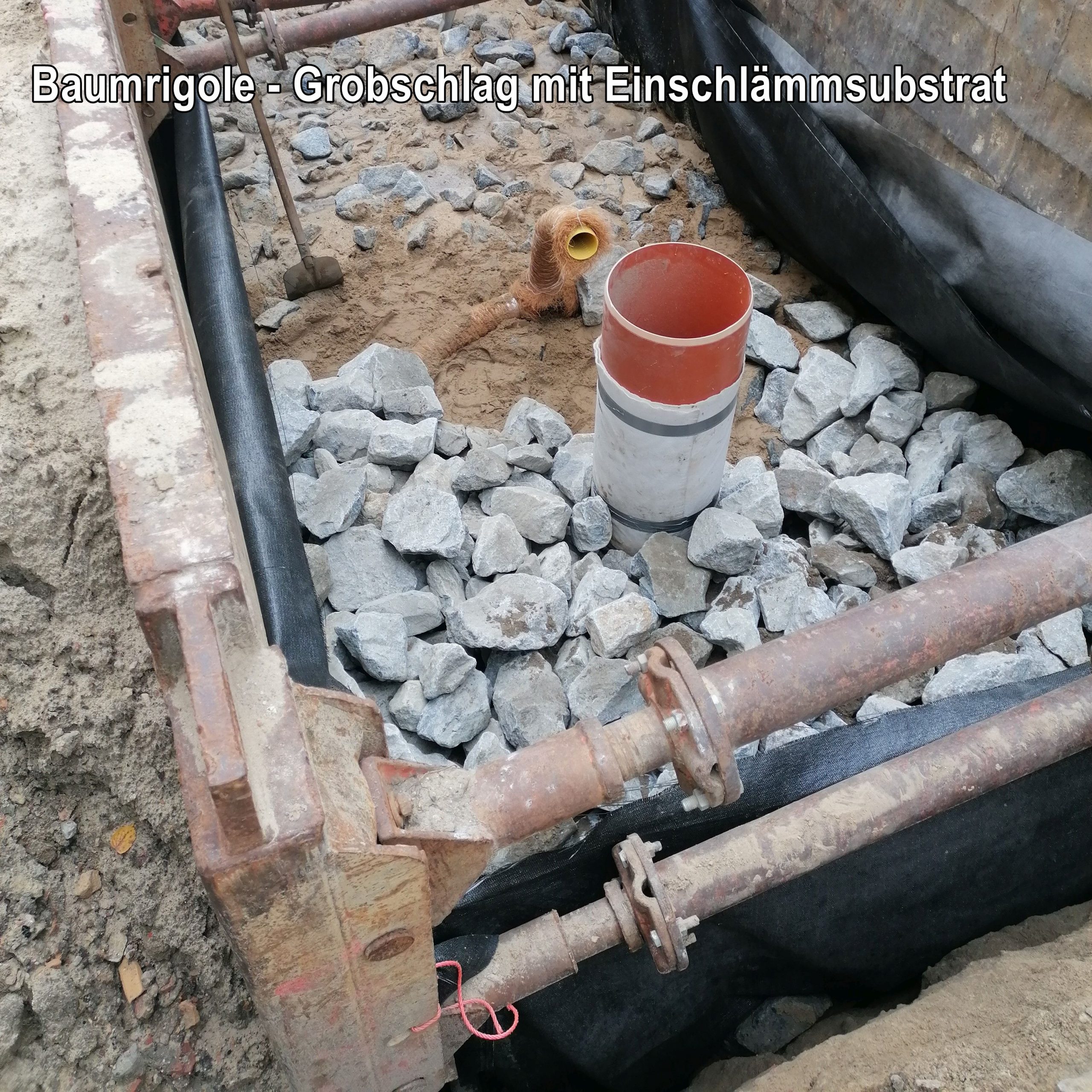
Challenge:
In Berlin, all properties must be disconnected from the sewer system in the long term. Here, almost the entire 4,000 m² plot including the roof surfaces had to be connected to infiltration systems - with a high degree of sealing. An exclusive infiltration via the revitalized soil zone of swales was not possible.
Since an access road also had to be connected to an infiltration trench, an appropriate filter system was required.
Underground infiltration systems must have minimum distances to the buildings, the property line and to the planned tree locations that comply with the rules of technology. In addition, the soil here is characterized by thick fill horizons contaminated with pollutants, including underground infrastructure and remaining old foundations.
Flood protection in the event of heavy rainfall is also very important. The slope situation as well as a trapped inner courtyard at the low point of the site with barrier-free building entrance impeded the retention possibilities on the available open space.
Solution:
On the heavily sealed inner-city site, rainwater infiltration cannot be ensured with a combination of infiltration trenches and swales alone. The only way to combine tree and infiltration trench in this confined space is to use a combined tree infiltration trench. Roof and yard drains drain into this. The tree infiltration trench initially enables intermediate storage and infiltration. At the same time, the rainwater stored here serves to balance the evaporation of trees and other vegetation. This ultimately has a positive effect on plant growth and the local urban climate.
The remaining storage and infiltration capacity required on the confined site was realized using retention channels, small swales and large maintenance-friendly tunnel trenches, which can also accommodate overflows from the swales during extreme events. Rainwater from the access road and parking areas is channelled into one of the two tunnel trenches via a special sedimentation and filter system, free of pollutants and grit.
The complex system was designed with the help of a long-term simulation using the STORM modeling software.